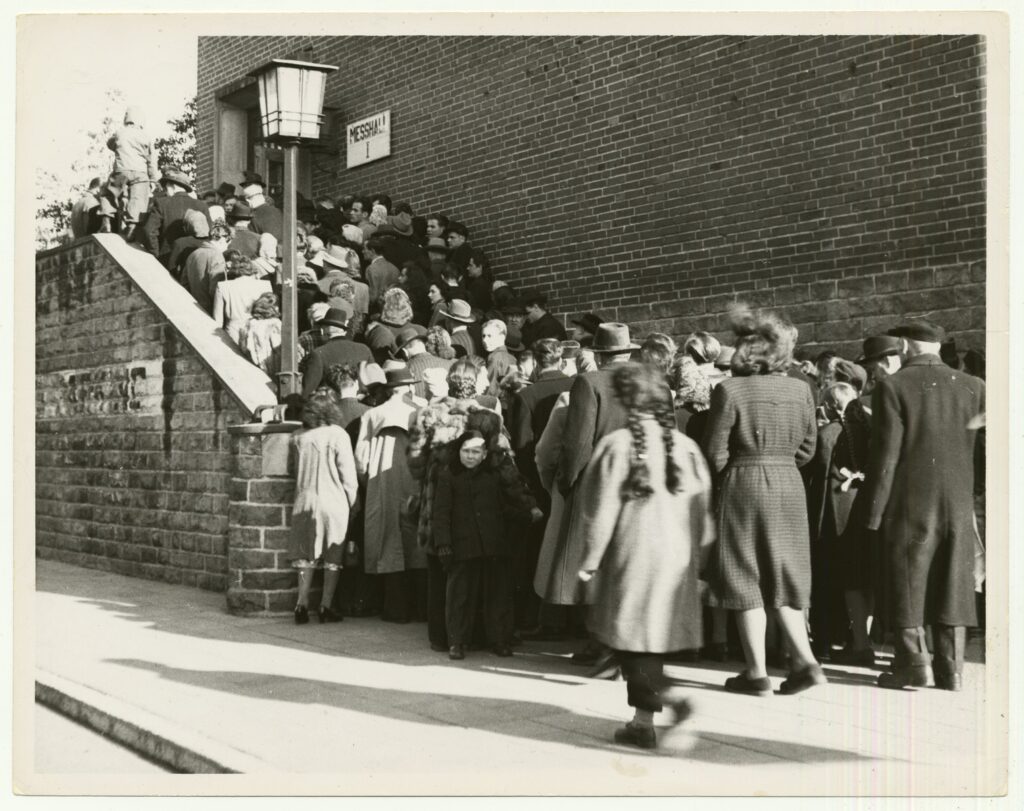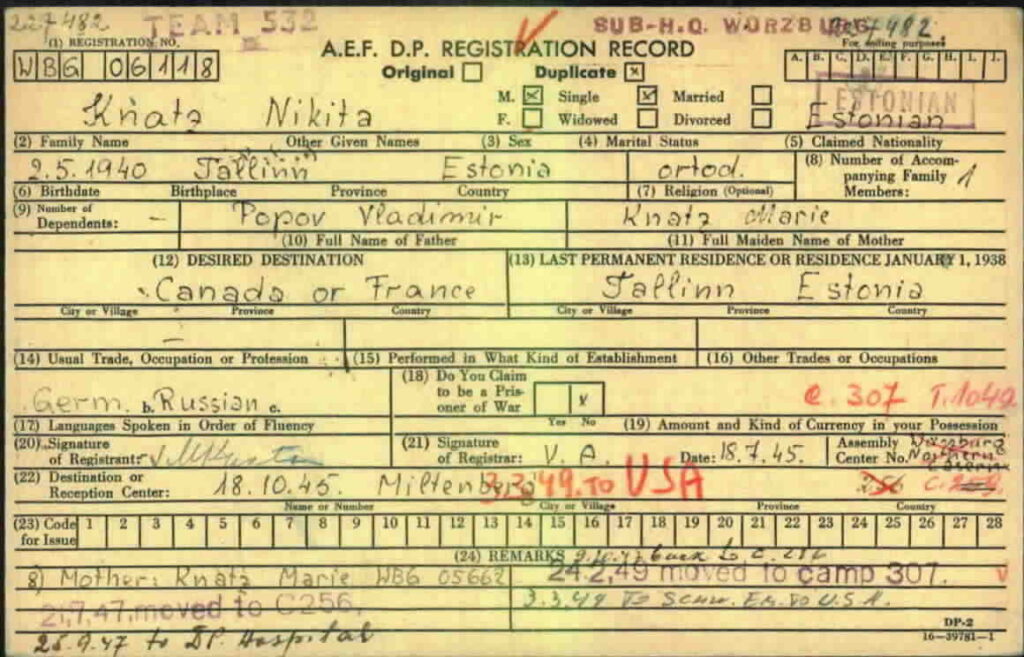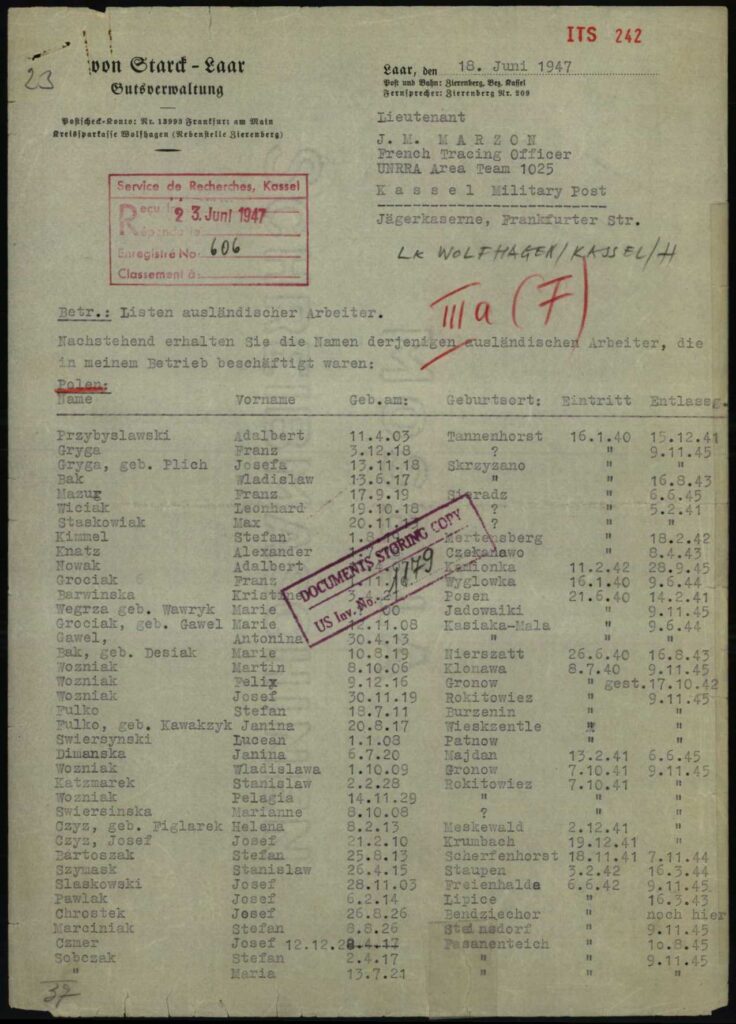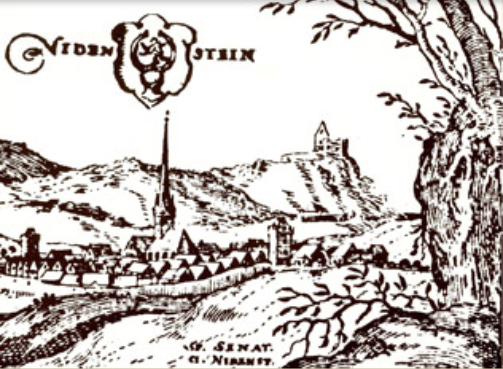
The Knatz family that came from Niedenstein were members of a Calvinists parish. From the book, Bevölkerung- und Sozialgeschiche der jüdischen Gemeinde Niedenstein 1653-1866 (Population and Social History of the Jews from Niedenstein 1653-1866), it is clear that some members of the Knatz family married into Jewish Families. The records on the Arolsen Archives include records of individuals that were subject to persecution by the Nazis or were refuges at the end of World War II. Many of these records were made by the allied forces who were dealing with displaced persons which may or may not have been Jewish. Some pertain to the descendants of the Hermann Knatz family that left Germany and moved to St. Petersburgh and then fled to Estonia during the Russian Revolution and during WWII had to leave Estonia, specifically Marie Knatz and her son Nikita Knatz. As you can see below Marie and Nikita were of the Russian Orthodox religion.


In 1949, the records for Nikita Knatz and his Mother Marie, made by the International Refugee Organization (IRO) einschließlich PCIRO, at Schweinfurt Germany indicate that preparations were being made for transport to the United States.

The final camp was the camp at Bremen-Grohn for transport by ship (USS GENERAL BLACK, USS GENERAL TAYLOR) to the United States. Here we can see their sponsors name and the address in San Francisco where they were headed.

The record below for Alexander Knatz is is a list of all persons of United Nations and other foreigners, German Jews and stateless persons drawn up by local German authorities and administrative offices after the end of the war. The lists were drawn up in connection with the so-called Allied Forces’ Orders, whose purpose was to obtain as much information as possible on the fate of prisoners of war, forced laborers and refugees.

The next record is for C. M. Else Knatz who was a U.S citizen from Orange, New Jersey. This record is done at the port of Bremen and deals with transport by ship (MARINE FLASHER, MARINE TIGER); transit countries and final destinations: USA

Similar records for Thomas Knatz and two children Ilse and Doris Knatz from West Orange, records also done at Bremen port: transport by ship (MARINE FLASHER, MARINE TIGER); transit countries and final destinations: USA Original source of records appears to be the United States War Shipping Administration and Maritime Commission.

